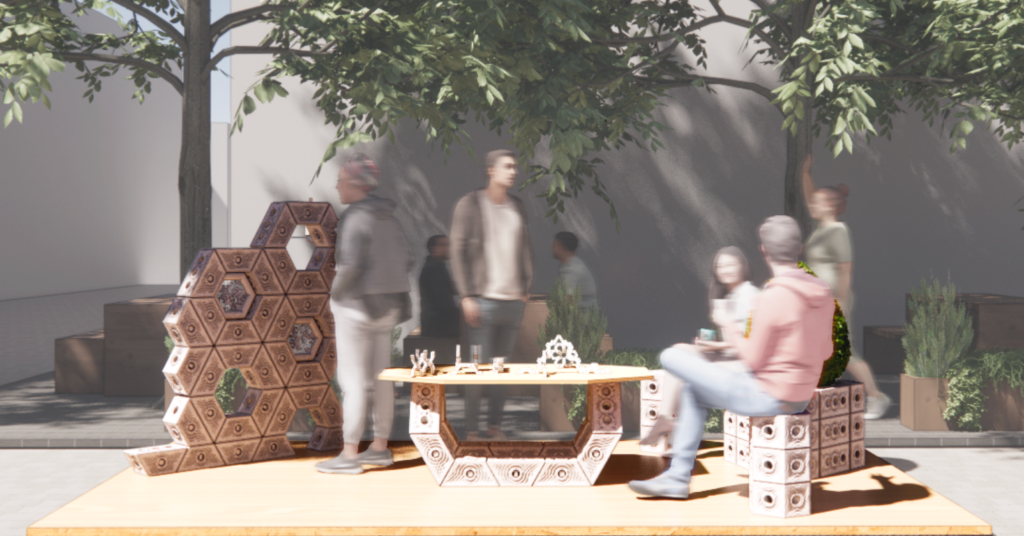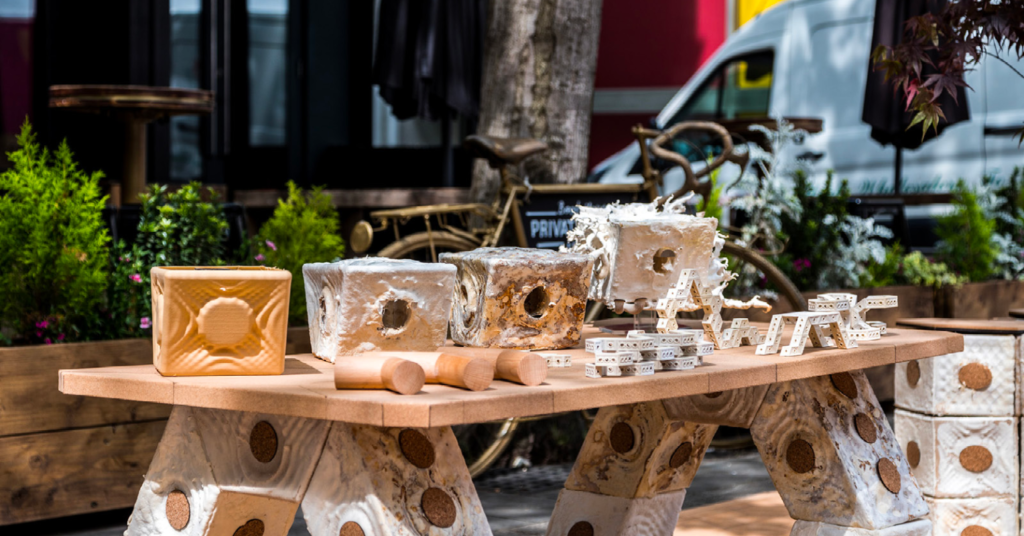These organic bricks are renewable, biodegradable, and lightweight. And they are made from fungi.

Construction is a significant contributor to global CO2 emissions, and finding low-carbon alternatives is crucial for a sustainable future. One material that shows immense promise is fungi.
Architects and scientists have been exploring the use of mycelium, the root-like network of fungal threads, as a construction material.
The Versatility of Fungi in Construction:
The use of mycelium in construction is not entirely new. Since 2007, it has been employed in sustainable packaging, and in 2014, an exhibition showcased an architectural installation made from agricultural waste and mycelium.
Recently, London-based PLP Labs showcased modular building blocks grown from mycelium at Clerkenwell Design Week. By combining 3D-printed wooden shells with mycelium, they created unique and versatile structures that resemble Lego blocks. The ability to create any shape, disassemble and reassemble these structures offers the flexibility needed for future architecture.

Sustainable Advantages of Fungal Materials:
Mycelium-based products possess remarkable sustainable qualities. They are renewable, biodegradable, lightweight, excellent at insulating, and highly fire-resistant. Unlike materials that are mined or derived from fossil fuels, mycelium has a minimal environmental impact. Its physical properties and abundance make it a favorable candidate for constructing eco-friendly homes and buildings.

Expanding the Potential of Fungal Construction:
While mycelium-based structures have already made a mark in the architectural world, there is ongoing research to enhance their capabilities. Scientists are investigating methods to create stronger structures capable of supporting weight, similar to traditional bricks. Additionally, the possibility of “grow at home” kits is being explored, enabling individuals to create custom structures using mycelium.

The Environmental Impact of Concrete:
Concrete, one of the most consumed materials globally, poses significant environmental challenges. Its production is highly polluting, energy-intensive, and depletes water resources. Cement production alone accounts for 8% of global CO2 emissions and releases harmful air pollutants. Moreover, the demand for sand in concrete production is depleting natural reserves, leading to ecological imbalances.
As the construction industry grapples with its environmental impact, the potential of mycelium as a construction material shines brightly. Fungal construction presents a unique opportunity to slash carbon emissions and create sustainable, eco-friendly buildings.